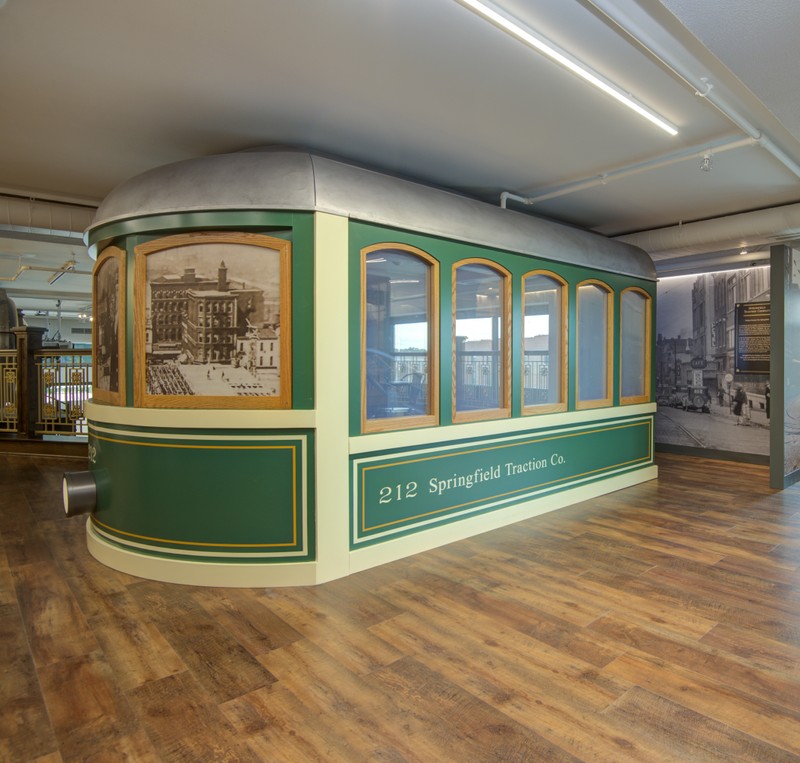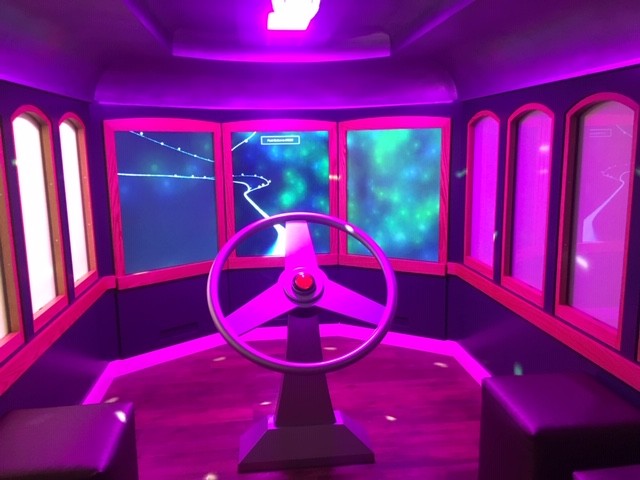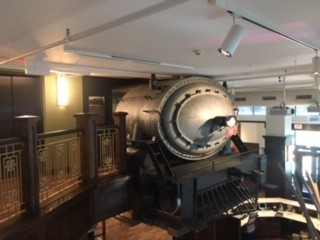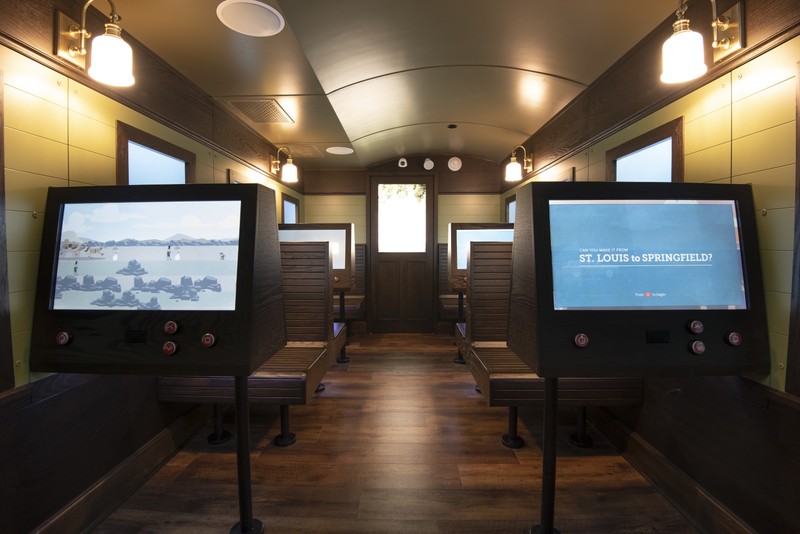Trains, Trolleys and Transportation Gallery
Introduction
Text-to-speech Audio
Images
Time Traveling Trolley

Explore 40+ stories from throughout Springfield's history in the Time Traveling Trolley.

All aboard the Frisco Train!

Play transportation games inside the Frisco Train

Backstory and Context
Text-to-speech Audio
Throughout America, the evolution of transportation was key to connecting a growing nation. Early transportation routes consisted of rough roads created by early Native Americans, which became pathways for settlers and eventually wagon trails. These trails became roads and railways that connected Springfield to other cities and eventually made it into the crossroads it is today.
The Butterfield Overland Mail Company was a stagecoach service which stopped in Springfield along its east-west route. From 1858 to 1861, it carried passengers and mail from Memphis, St. Louis, and through Springfield to San Francisco. John W. Butterfield and his associates created a proposal to the Postmaster General for a southern service route which was the largest land-mail contract ever awarded in the U.S. at the time. It made two trips a week over a two and a half year period. Prior to the Civil War, the competing Pony Express was formed in 1860 to deliver mail faster on a central/northern route away from the volatile southern route.
The 1870 arrival of the Atlantic and Pacific Railroad (acquired in 1876 by the St. Louis-San Francisco Railway, known as the Frisco) began a new phase of development for the area. However, it arrived north of the city of Springfield because city leaders refused to compensate the railroad for changing the route they had surveyed. Other area residents were more than willing to work with the railroad in its preferred location, and support services and infrastructure quickly developed. The city of North Springfield was incorporated in 1871 to support the railroad and was finally absorbed into Springfield in 1887. The railroad business continued to grow in the area as the Missouri Pacific came through and the Frisco increased activity. Although passenger service stopped in the 1950s, the Frisco still has a strong presence in the area.
The first mule-powered streetcar lines in Springfield were laid in the early 1880s, running first from Commercial Street in North Springfield down to the Public Square and later branching out to other parts of the city. The Springfield Traction Company purchased various streetcar lines here in 1895 and built the first powerhouse in town to fuel them. Springfield was the first city west of the Mississippi to have electric trolleys, and in 1900, Springfield was one of only 50 cities across the U.S. to have electric trolleys. The last trolley car ran until 1937 when buses took over public transportation.
